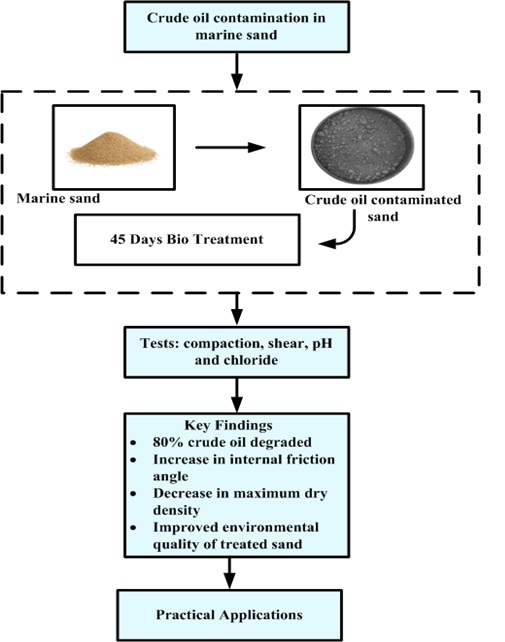-
Topic
-
VolumeVolume 27 (2025)
-
Issue
-
Pages1-12
- gnest_07300_final.pdf
-
Paper IDgnest_07300
-
Paper statusPublished

The contamination of marine sand with crude oil (CO) can significantly alter its geotechnical properties, including its strength, compressibility, and permeability. The bioremediation process, which uses microorganisms to break down and eliminate toxins, can alter the structure and composition of the soil, which can further affect these characteristics. Various oil-degrading bacteria have been proven to remove oil contaminants from soil. Their impact on the geotechnical characteristics of polluted materials is not well studied, nevertheless. A bacterial strain called Bacillus amyloliquefaciens, with concentrations ranging from 2% to 12% is used in this study to break down oil pollution from crude oil-contaminated sand. The change in the bioremediation sand's geotechnical characteristics was then determined. Results showed that after 45 days of treatment, up to 80% degradation of crude oil was achieved, with higher bacterial concentrations correlating with increased degradation efficiency. The angle of internal friction increases with treatment duration and bacterial concentration, while the highest dry density decreases with crude oil concentration and chloride content. These findings demonstrate that controlled bacterial treatment not only mitigates contamination but also enhances soil properties, supporting the potential use of biotreated marine sand in offshore foundation construction and as a stable road base material, subject to further field validation.
Total file downloads: 3